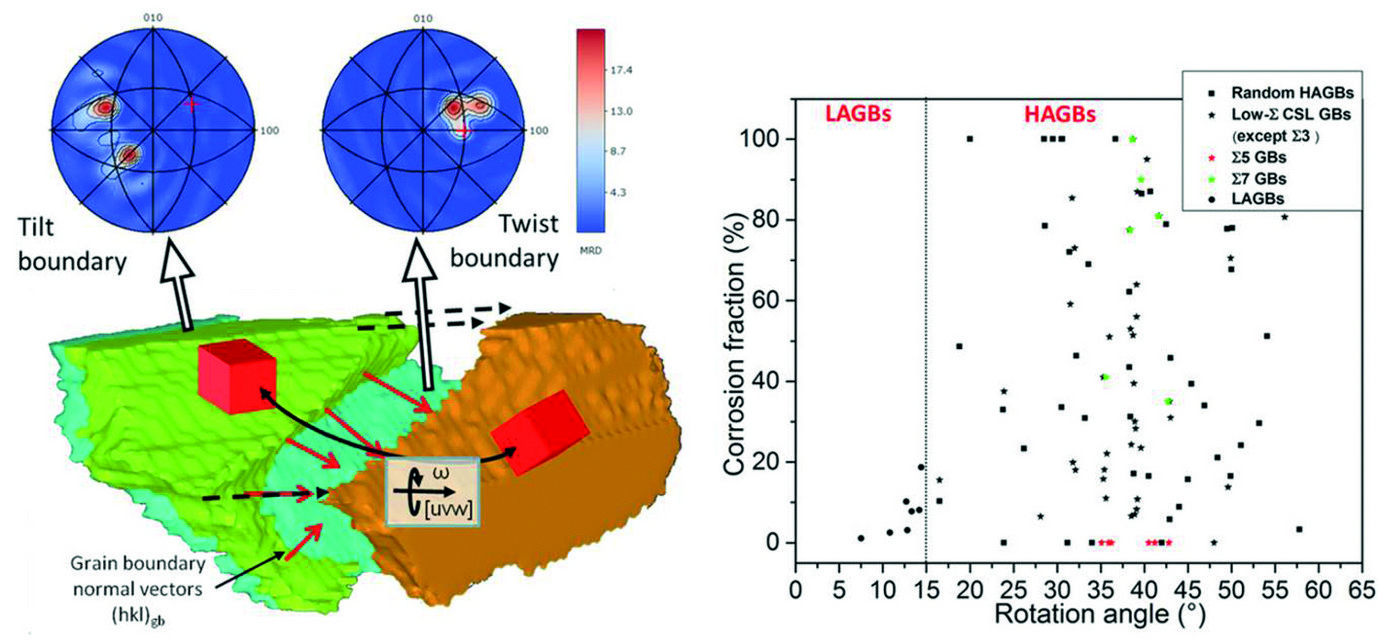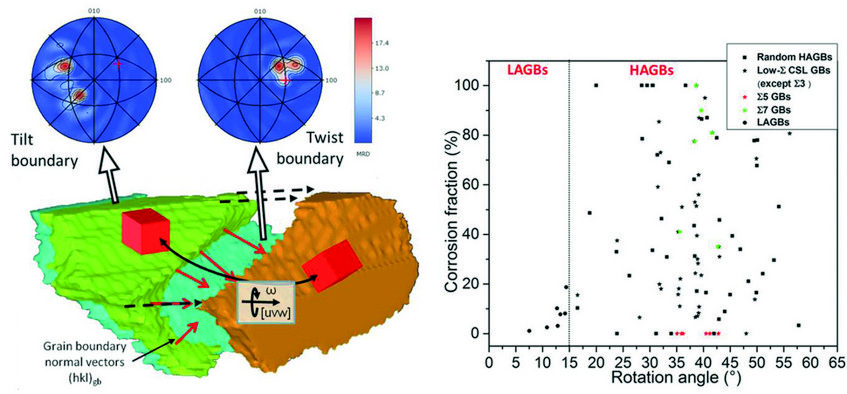Comprehensive Characterization of Grain Boundaries
Grain boundaries are important 2-dimensional microstructural elements. They strongly influence most of the properties of polycrystalline materials like mechanical, chemical, or electronic behaviour. Understanding materials properties, therefore, requires understanding the correlation of their character and their properties.
The crystallographic character of every flat grain boundary (GB) segment is determined by 8 parameters: 5 rotational parameters describing the rotational positions of the two crystals across the boundary and of the boundary plane, and 3 translational parameters describing the relative shift of the two crystal lattices at the atomic level. Additionally, on curved boundaries these parameters may change from place to place giving rise to further degrees of freedom and changing properties.

Fig. 1: (a) 3D orientation microscopy image and GB pole figures of 3 grains in a FeNi alloy. (b) Corrosion properties of GBs in a stainless steel displayed over the GB misorientation angle. For low angle GB (LAGB) corrosion increases with misorientation angle. No clear correlation is visible for high angle GB (HAGB) because GB planes are not considered in the graph.
The 3 translational parameters usually depend on the rotational ones. It is, therefore, important to determine the 5 rotational parameters and correlate them to properties. We have developed over the last years software and hardware tools to measure and analyse the 5-parameter grain boundary character and the related local properties. Hence we use 3-dimensional orientation microscopy based on a combination of orientation mapping by electron backscatter diffraction (EBSD) and serial sectioning [1].
For 3D-reconstruction the successive individual slices are loaded in-to a self-developed computer programme (QUBE, commercialized by Bruker nano) which allows alignment of the slices and, e.g., reconstruction and display of the 3D-GBs. An example is given in Fig. 1a showing 3 grains of an FeNi martensitic microstructure and their crystallographic properties in form of inverse pole figures.
Without knowledge of the related GB properties, the 5-parameter GB character alone is not very interesting. However, once it has been determined it is possible to measure properties on the remaining part of the material. In this way we could measure, e.g., the cathodoluminescence activities of GBs in polycrystalline CdTe solar cells. In another example we measured the corrosion activity of different GBs in a stainless steel. It was found that both, GB planes as well as GB misorientations have strong influence on the corrosion activity (see Fig. 1b).
Authors: R. Hadian and B. Grabowski
